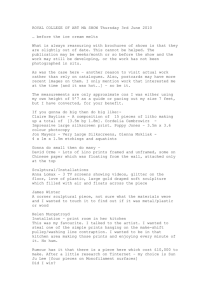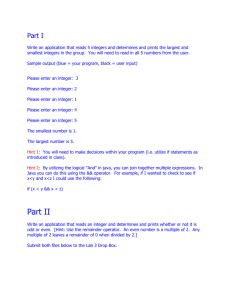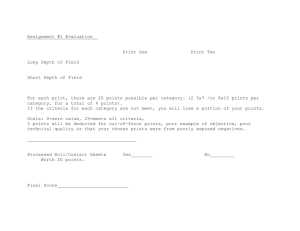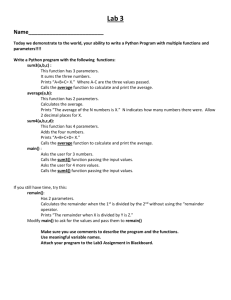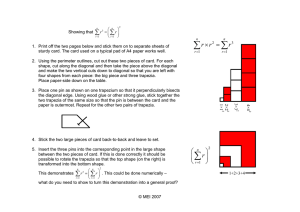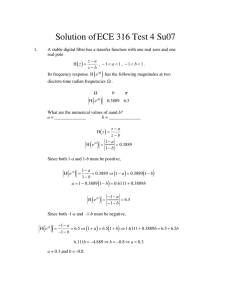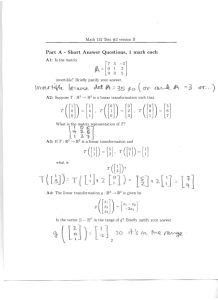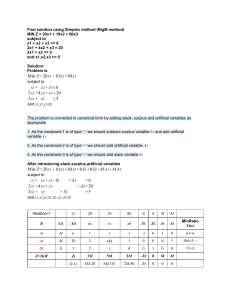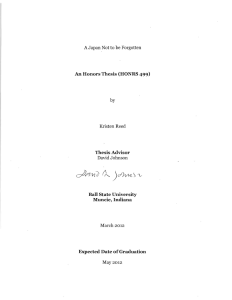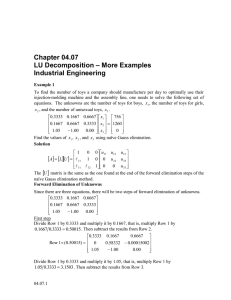Crash Course: September/October 2015 Solutions
advertisement
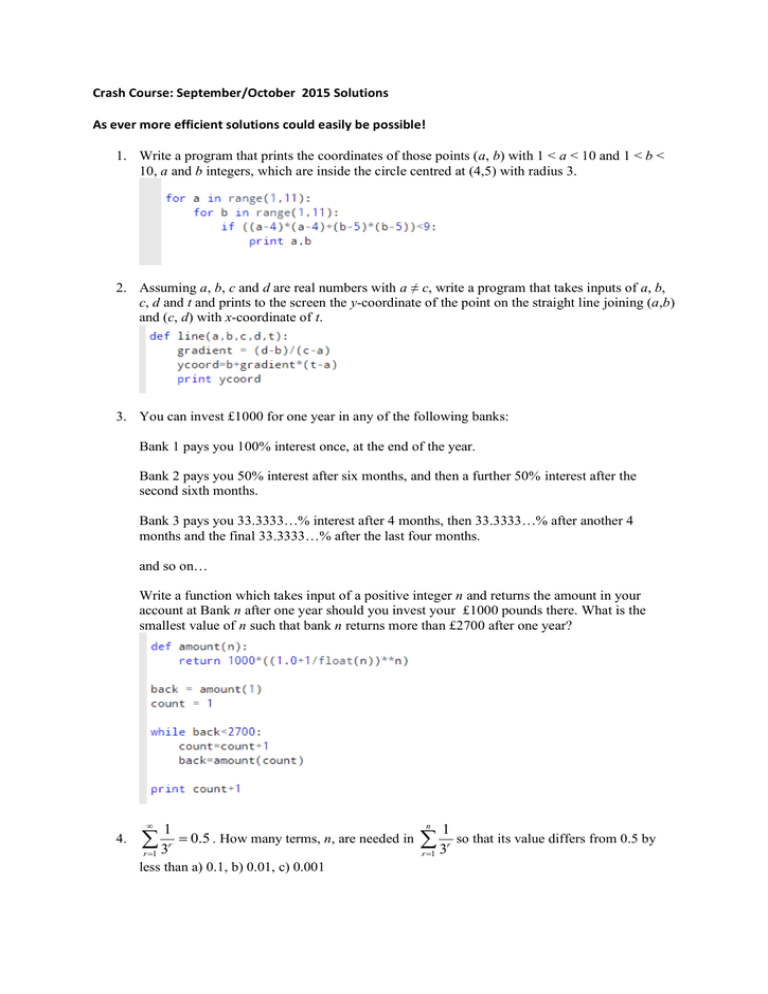
Crash Course: September/October 2015 Solutions As ever more efficient solutions could easily be possible! 1. Write a program that prints the coordinates of those points (a, b) with 1 < a < 10 and 1 < b < 10, a and b integers, which are inside the circle centred at (4,5) with radius 3. 2. Assuming a, b, c and d are real numbers with a ≠ c, write a program that takes inputs of a, b, c, d and t and prints to the screen the y-coordinate of the point on the straight line joining (a,b) and (c, d) with x-coordinate of t. 3. You can invest £1000 for one year in any of the following banks: Bank 1 pays you 100% interest once, at the end of the year. Bank 2 pays you 50% interest after six months, and then a further 50% interest after the second sixth months. Bank 3 pays you 33.3333…% interest after 4 months, then 33.3333…% after another 4 months and the final 33.3333…% after the last four months. and so on… Write a function which takes input of a positive integer n and returns the amount in your account at Bank n after one year should you invest your £1000 pounds there. What is the smallest value of n such that bank n returns more than £2700 after one year? 4. 1 0.5 . How many terms, n, are needed in r r 1 3 less than a) 0.1, b) 0.01, c) 0.001 n 1 3 r 1 r so that its value differs from 0.5 by ( 5. This question is related to definition of differentiation (‘first principles’). Here you’ll find an approximation to the derivative of f(x) = x2 at x = 3. Starting with h = 1, calculate 3 h h 2 32 . Then continually halve h and recalculate. Stop doing this when the distance between two successive results is less than 0.00001 and print the value of the latest calculation to the screen. b 6. Write a function that takes a, b, n (a positive integer) as inputs, prints the estimate to x dx 2 a using the trapezium rule with n trapezia and then prints the difference between this value and b3 a 3 . What is the smallest value of n such that the difference between the estimate to 3 3 2 23 13 2 is less than 0.00001? x dx using n trapezia and 1 3 3
